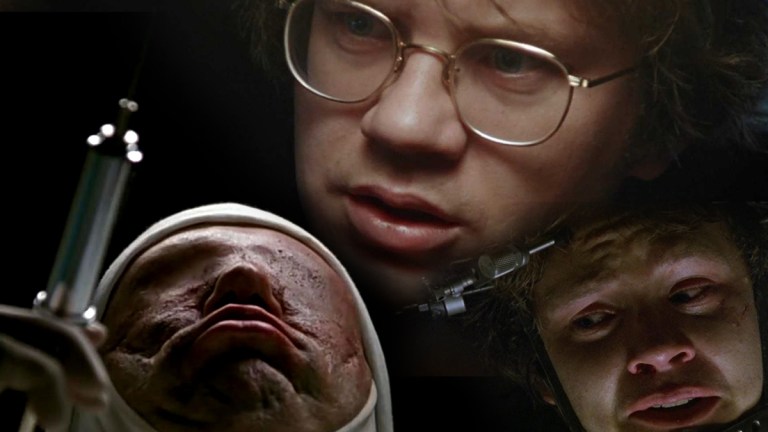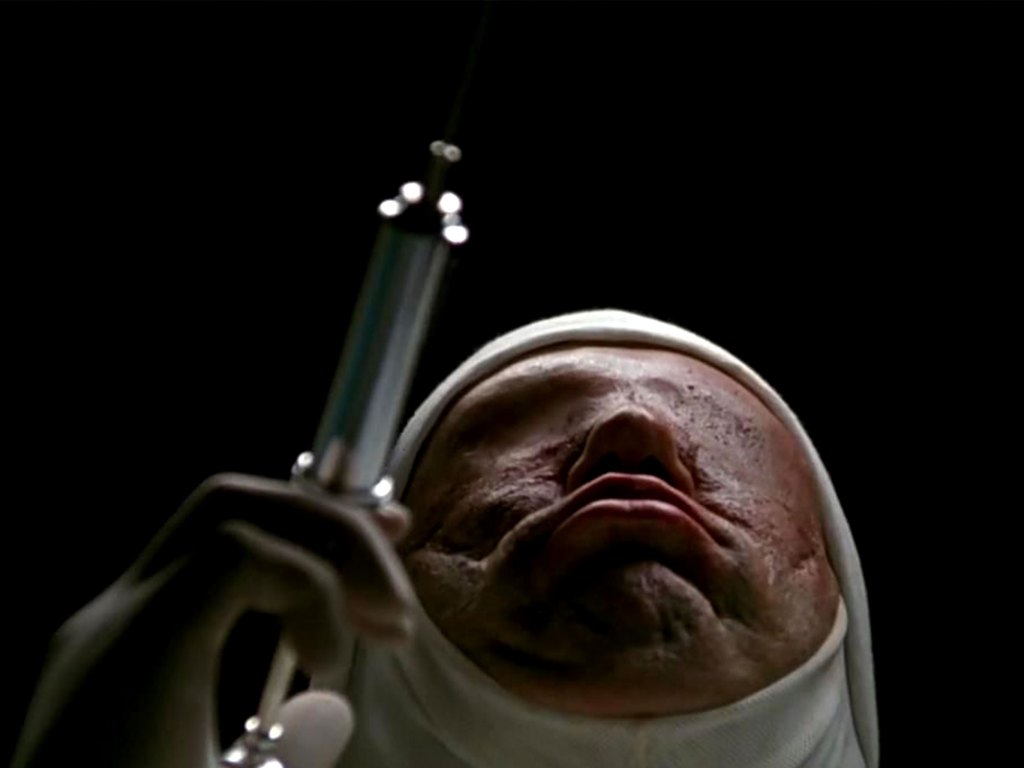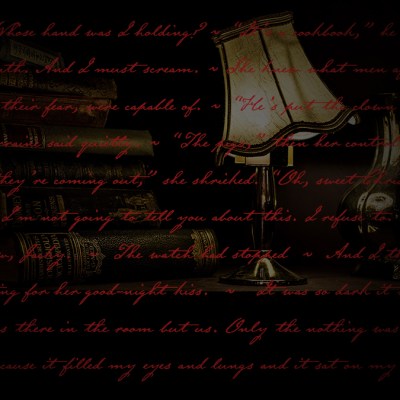Jacob’s Ladder: How LSD, Tibetan Buddhism and Tim Robbins Combined to Create a Cult Classic
Screenwriter Bruce Joel Rubin on the alchemy that went into creating the terrifying Jacob's Ladder

Screenwriter Bruce Joel Rubin still recalls one viewer’s reaction to Jacob’s Ladder.
“I was stood outside the theatre on the very first day it opened in LA, waiting for the crowds to come out to see how they responded,” Rubin recalls. “As the credits started rolling this guy ran out, probably five feet from me, and yelled at nobody in particular: ‘If I ever meet the guy that wrote that movie, I’ll kill him.’”
It was an extraordinary reaction but, then again, Jacob’s Ladder is an extraordinary movie.
Released on November 2, 1990, the film was only a modest success at the box office, debuting at number one in the US before being knocked off the top spot by Child’s Play 2 just a week later. But while plastic dolls reigned supreme on the big screen, Jacob’s Ladder would have its day on home video, where it garnered a cult following in the decades that followed.
It wasn’t difficult to see why; Jacob’s Ladder was the perfect film for the burgeoning format, a multi-layered tale both thematically complex and utterly terrifying. While the film’s main scares were worthy of pausing and rewinding, the fact was that Jacob’s Ladder demanded multiple viewings.
For director Adrian Lyne, that proved crucial to the film’s enduring popularity.
“You probably needed to see the movie twice to sort of understand it. You probably would’ve enjoyed it better the second time,” he told ComingSoon.
Not that his remarks were meant as a criticism – there was just a lot to unpack, in particular that ending.
Set in a grimy 1970s New York, the film ostensibly follows the story of Jacob Singer, a postal worker haunted by his experiences in Vietnam and the death of his young son (an uncredited Macaulay Culkin). Jacob’s damaged existence is shattered further when he becomes increasingly plagued by vivid hallucinations of demon-like creatures and otherworldly realms.

Divorced and living with girlfriend Jezzie (Elizabeth Peña), as Jacob journeys further down the rabbit hole he learns he and his fellow G.I.’s may have been test subjects for an experimental drug known as Jacob’s Ladder. However, with his haunting visions intensifying, Jacob soon finds himself caught between questioning the very basis of his existence and desperately seeking the truth of his condition with the help of his chiropractor Louie (Danny Aiello).
Featuring standout supporting turns from Peña and Aiello, Jacob’s Ladder is notable for handing Tim Robbins his first major dramatic role. Up until that point Robbins had been better known for comedic turns in films like Tapeheads, Bull Durham, and Howard The Duck. The role of Jacob Singer arguably changed his life.
Yet what makes the movie so unique is that while it is both thriller and psychological horror, Jacob’s Ladder ultimately transcends both to emerge as something spiritual and transformative. It’s in the final denouement that audiences discover everything they have been watching has been playing out in Jacob’s imagination as he lies dying in a makeshift Vietnam hospital (something hinted at in a series of brief flashbacks).
A metaphysical trip of a movie, the idea for Jacob’s Ladder was born out of an altogether different kind of trip Rubin went on while studying screenwriting alongside the likes of Martin Scorsese and Brian De Palma at NYU.
“I guess the seed formed for most of my writing during an LSD trip in 1965,” he tells Den of Geek. “My roommate at the time was a very good friend of Timothy Leary [an American psychologist and writer known for his strong advocacy of psychedelic drugs] and he gave me a tablet of LSD. He said it was strong and that I should take it whenever I felt it was right. So I kept it in my wallet for about six months.”
The day eventually came.
“The day I decided to take it, a man arrived at our apartment,” Rubin says. “He was bringing a jar of lysergic acid (pure liquid LSD) with him from some laboratories in Switzerland. He asked if he could leave it in our refrigerator before going up to Millbrook, New York, which is where Leary and his guys were all devoting their time to ‘experimentation’.”
Rubin’s trip began with a common mistake many have made with hallucinogens.
“That night I took the tablet that had been sitting in my wallet and nothing happened,” he says. “My roommate said, ‘well, we have this pure lysergic acid sitting in the refrigerator, why don’t I get an eyedropper and I’ll give you a drop?’ I said ‘OK’. So he went to give me a drop from the eyedropper and by mistake squeezed thousands of micrograms of LSD down my throat.”
The subsequent LSD trip Rubin experienced changed his outlook on life, death and spirituality.
“What came out of that was a mystical experience so profound, but I could find nothing in Western teaching that talked about it,” he says. “But I did find teachings in Eastern religions like Tibetan Buddhism. I decided that I needed to go to places like India and Nepal and meet with teachers to get an understanding of what it was that happened because I entered a world so much bigger than the world we know experientially, so much more vast and internal, if you will, that I needed some direction.”
Despite bagging a job as an assistant film editor with NBC upon graduation, Rubin had been changed by his LSD experience. Ditching the job, he spent time in Greece before hitchhiking through Turkey, Iran, Afghanistan, and Pakistan en route to the east and further enlightenment.
Rubin spent time in ashrams in India, a Tibetan monastery in Kathmandu, a Buddhist temple in Bangkok, and a Sikh temple in Singapore as part of a journey that saw him encounter multiple faiths and cultures.
Yet it wasn’t until he returned to New York and met Albert Rudolph, aka Swami Rudrananda, a spiritual teacher who specialised in yoga and meditation, that he began to find the answers he sought.
A jobbing writer in Hollywood, the idea for Jacob’s Ladder came to him one night in a nightmare that began on a near-deserted late night New York subway train.
“I had a dream where I get off the train and end up trapped in a subway station with no exits,” he says. “I realize the only way out is down through the dark tunnel of the subway into some kind of awful hell. But I have to make that journey, because ultimately it’s the journey to my own liberation.”
From there Rubin began to piece together the film’s plot, recalling an Ambrose Bierce short story that had a profound impact on him.
“I had this recollection of ‘An Occurrence at Owl Creek Bridge’ which is the story of what goes on in the mind of a man who’s about to be hung,” he says. “He imagines the rope snaps and he get away. He meets a woman and he’s been running back to find her and just as they embrace he feels a huge pull on his neck and he’s hung off the bridge.”
Rubin was fascinated by the idea of a film that fused that narrative with the Tibetan Book of the Dead and the concept of an after-death experience that offers an individual the chance to achieve peace and closure with what they leave behind.
“It’s the idea of what happens inside the mind of a man as he dies,” he says. “Working out all the things they never addressed when they were alive. It is a confusing, complicated state of consciousness. Time is subjective, so that years could be experienced in a matter of milliseconds. Rather than running away from the problem, it’s about embracing it. For Jacob, that moment comes with his son. He learns that it’s only though the biggest losses and the greatest pain and the most broken heart, that you discover your way to liberation.”
Rubin began work as far back as 1980 on the script for Jacob’s Ladder and even began working on the initial treatment for another film, which would go on to become the Oscar-winning Patrick Swayze favourite Ghost.
“Both films shared a certain kind of storytelling idea, one being more frightening and more horror and the other something more popularized,” he says. “But both were trying to convey this idea that death is not what you think is.”
However, after moving his family to LA to focus on becoming a successful screenwriter, Rubin was dumped by his agent, who told him his work was “too metaphysical and nobody wanted to make movies about ghosts.”
His fortunes would soon change though when the script for Jacob’s Ladder was named on a list published by American Film magazine of the best unproduced scripts in Hollywood.
It was in good company alongside the scripts for films like The Princess Bride and Total Recall with the article stating how it was “one of the very few screenplays. . . with the power to consistently raise hackles in broad daylight.”
Even so, it would take a few more years to get Jacob’s Ladder off the ground with Rubin determined to stay as true to his original script as possible. That required a significant budget and a director with a significant amount of commercial clout.
Ridley Scott, Michael Apted, and Sidney Lumet all expressed an interest but it was Lyne who took a leap of faith describing it as “one of the best scripts I’ve ever read”.
It proved a shrewd move for all involved with Lyne turning down the chance to adapt Tom Wolfe’s satirical novel The Bonfire of the Vanities in favor of Jacob’s Ladder.
“He’s a great artist. He brought a great vision,” Rubin says of Lyne. “If he hadn’t made Fatal Attraction before, it probably wouldn’t have gotten the green light.”
Meanwhile Rubin’s old NYU friend, De Palma, would go on to direct what became one of the most notorious flops in movie history with Bonfire of the Vanities.
With Jacob’s Ladder, Lyne sought to move away from the old testament-like demons that torment Jacob in the original script, preferring something that would further blur the line between dream and reality.
“He didn’t want the spiritual iconography, horns and tails and things like that, that represent demons and angels, wings and things,” Rubin says. “Instead he wanted to play around with nodules and growths coming out of people’s heads. Some kind of human and disturbing. It sounded great and ended up being quite terrifying. Characters could be both demonic and human at the same time.”
Another area they disagreed on was the film’s ending. Rubin originally envisioned a more Biblical conclusion in which Jacob was set on fire by girlfriend Jezzie before ascending to Heaven on the Jacob’s Ladder that features in the book of Genesis.
“Jacob would be burned to a crisp. Louie the chiropractor (Aiello) finds him and comes over to this shell of a person and he looks at this ash in the form of Jacob and then Jacob’s eyes open,” he says. “And Louie says ‘Jacob your body can’t hold you anymore’ and pulls at the ash surrounding him and beams of light pour out and you realise he is nothing but light. Then he starts walking up the ladder and disappears. That was the original version. I don’t know if it’s any better, but I always loved it and it never got made. But, you know, in Hollywood you rarely get to see the movie you wrote.”
Opting against any post-production special effects, Lyne preferred to offer only glimpses of the horrors Jacob faces, flashes and disturbing moments inspired by the art of Francis Bacon and H.R. Giger and the photography of Diane Arbus and Joel-Peter Witkin and filmed against the backdrop of a Gothic-tinged vision of New York that chimed with Rubin’s script.
Lyne’s eye for experimentation and “less is more approach” proved crucial in shaping the nightmare world of Jacob’s reality. In one neat bit of camera trickery, actors were recorded shaking their head at a low frame rate which, when played back in fast motion, created the nightmarish faceless vibrating figures that feature in the film. Lyne further hinted at the film’s shock ending by having helicopter sounds played over the effect.
For all the visuals deployed, the film might have fallen flat without Robbins’s affecting performance. Coming several years before The Shawshank Redemption, the casting represented a gamble for all involved, given Robbins’s status as a comedic supporting star up until that point.
Handed the role after first choice Tom Hanks opted to star in the regrettable Bonfire of the Vanities, Robbins was determined to make the most of his opportunity.
“I’m always looking for something that takes a left turn, and this was a great opportunity to go in a different direction,” Robbins told the New York Times. “I love doing comedy, but I know I can do other things as well.”
Even so, Rubin recalls that Robbins took a little convincing, having taken a fancy to the other film he was working on at the time.
“He didn’t want to do Jacob’s Ladder. Tim wanted to star in Ghost but he was the wrong kind of actor. He was perfect for Jacob’s Ladder. It took a lot of convincing to get him to say yes to Jacob’s Ladder but I think now he’s happy that he did it.”
30 years on, Robbins can have few regrets about starring in the film, which continues to find new fans and spark repeated viewings and debate among fans thanks to that unique ending which not only served up a major twist but, with it, a sense of awakening to the idea of a plain of existence beyond the mortal coil.
“I think it’s the fact that you don’t know what’s going on. You’re scared,” Rubin says. “What’s happening makes no sense. The fact that you’re so engaged by Jacob’s relationship with Jezzie to then discover that he has a wife and children. Then having no idea how these things come together and seeing snippets of these scenes of Vietnam. In your mind, you are watching the film knowing something is drastically wrong and wanting to resolve it. And then in the final moments, they pronounce him dead and there’s this kind of shock of ‘oh my God, that was the answer’. It’s designed to be a big wake up call.”
The screenwriter also finds it fitting that many come to the film in much the same way he came to the idea back in 1965.
“I have heard it’s a rite of passage for sophomores in some US colleges to get stoned often for the first time – or, you know, not the first time – and watch Jacob’s Ladder,” he says. “It’s like the perfect stoner movie, it really is, because getting stoned is like a little glimpse into LSD. Marijuana is a kindergarten step into the graduate degree of LSD.”
Ghost may have ended up bagging Rubin the Oscar for best original screenplay but he’ll always have a soft spot for Jacob’s Ladder.
“I remain very proud of it and I think without Adrian Lyne directing it would never have been what it is,” Rubin says. “So many films just disappear into the ether. But certain films stay with you. Jacob’s Ladder speaks to the human condition. I tried very hard to make movies that offered different perspectives. There’s a lot to talk about in their world and it’s hard to get Hollywood to make those movies. I’m very grateful. I got to speak to the world.”
